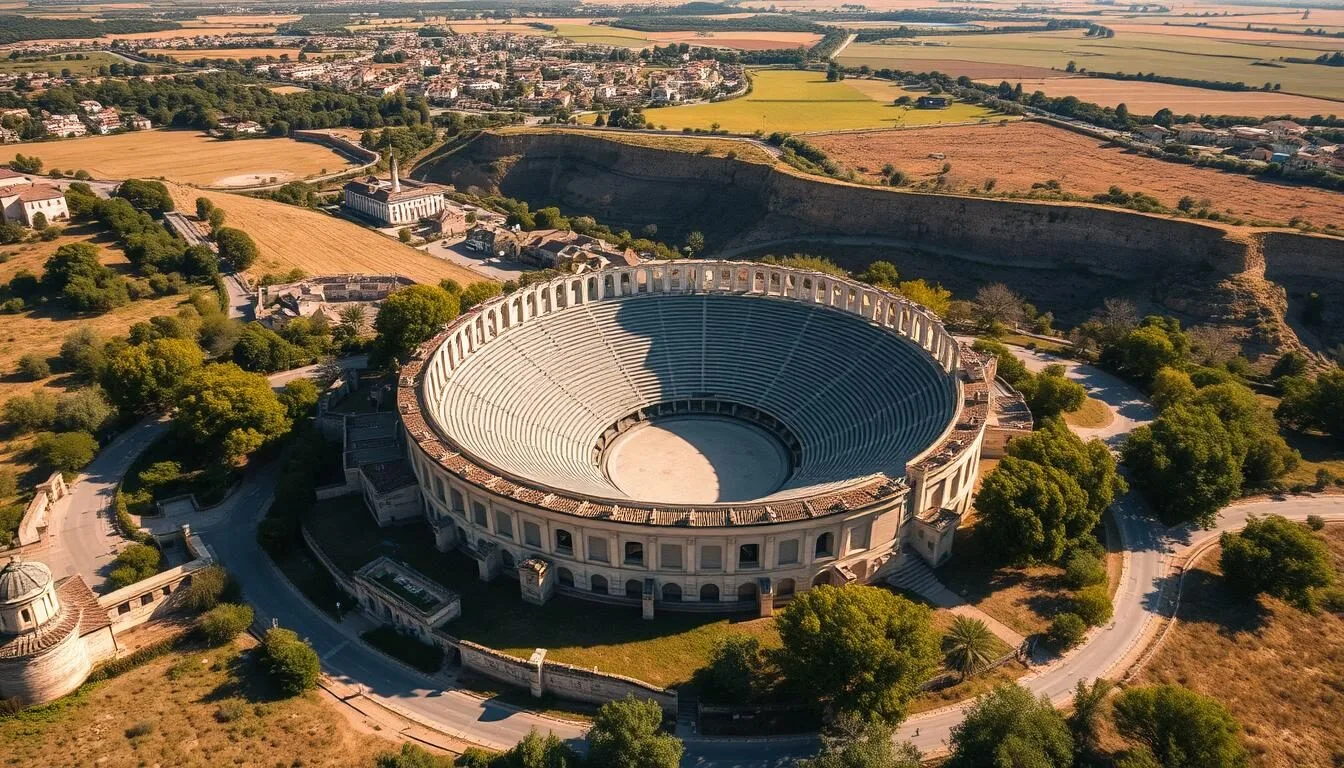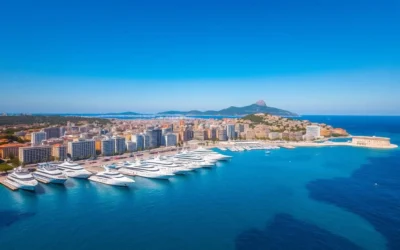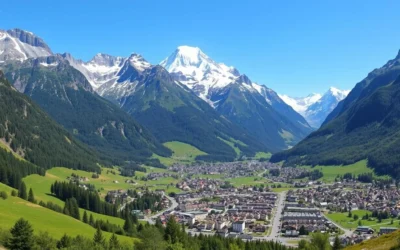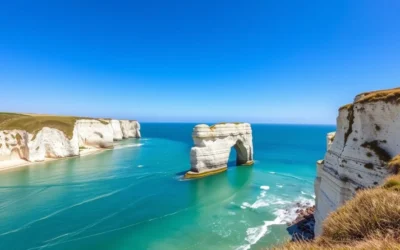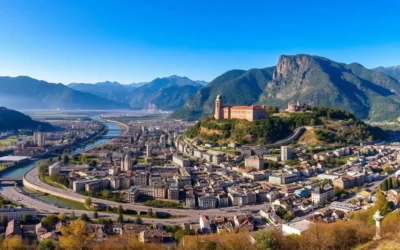Did you know Arles enjoys over 300 days of sunshine annually – more than Nice or Marseille? This ancient Roman city in Provence captivated Vincent van Gogh with its extraordinary light, inspiring some of his most famous works. The UNESCO-listed monuments bathe in this golden glow year-round, but timing your visit can dramatically impact your experience. From the fierce Mistral wind that can make winter feel bitter to the scorching summer heat that transforms the city into a vibrant cultural hub, Arles’ climate shapes its character throughout the seasons.
Getting There & Planning Your Journey
The most convenient way to reach Arles is through Marseille Provence Airport (MRS), located about 65 km (40 miles) away. From there, you can rent a car for the 45-minute drive or take a shuttle to Vitrolles train station, then connect to Arles by train.
Alternatively, Arles is well-connected by France’s high-speed TGV train network. Direct trains from Paris take approximately 4 hours, while connections from Marseille are just 40 minutes. The train station in Arles is within walking distance of the historic center.
Ready to Book Your Trip to Arles?
Find the best flight deals to Marseille Provence Airport and start planning your perfect Arles getaway.
When planning your journey, consider that spring (April-June) and autumn (September-October) offer the most pleasant weather for exploring. If you’re driving from other parts of France or Europe, the A7 and A9 motorways provide easy access to Arles.
Best Time to Visit & Weather Tips
Arles experiences a Mediterranean climate with distinct seasonal variations. Understanding these patterns will help you plan the perfect trip based on your preferences for weather, crowds, and special events.
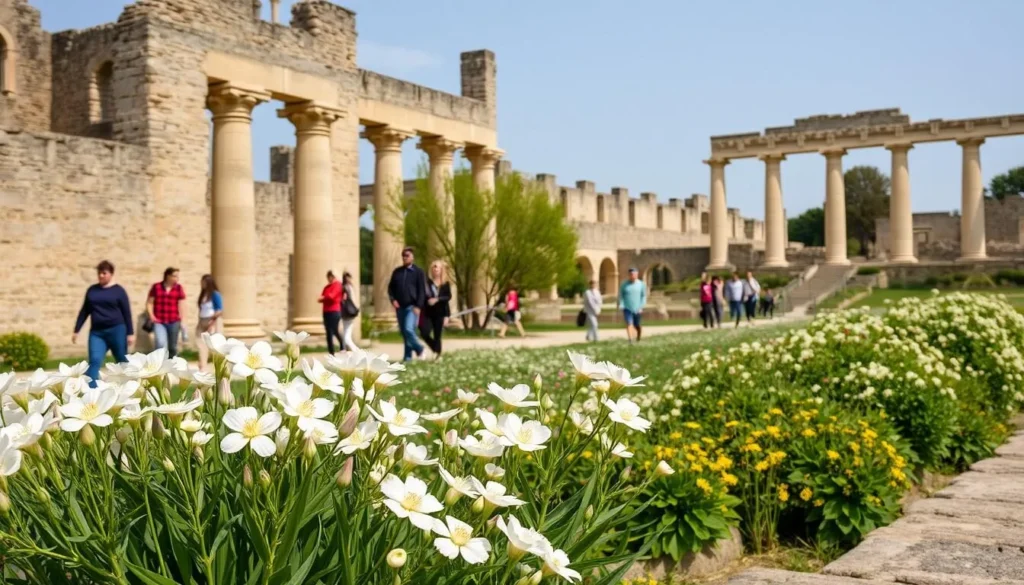
Winter (December-February)
Weather: 5-13°C (41-55°F), occasional rain, Mistral wind
What to Wear: Warm layers, windproof jacket, scarf, hat
Things to Do: Museum visits, indoor cultural sites, winter markets
Pros
- Fewer tourists
- Lower accommodation prices
- Authentic local experience
Cons
- Cold Mistral winds
- Some attractions have limited hours
- Fewer outdoor activities
Spring (March-May)
Weather: 10-22°C (50-72°F), mild, occasional rain
What to Wear: Light layers, light jacket, comfortable walking shoes
Things to Do: Easter Feria, photography, Roman monument tours
Pros
- Blooming countryside
- Pleasant temperatures
- Fewer crowds than summer
Cons
- April can be rainy
- Unpredictable Mistral winds
- Easter week brings crowds
Summer (June-August)
Weather: 22-32°C (72-90°F), hot, dry, occasional Mistral
What to Wear: Light breathable clothing, sun hat, sunglasses
Things to Do: Rencontres d’Arles photography festival, open-air events
Pros
- Vibrant festival atmosphere
- Long daylight hours
- Perfect for outdoor dining
Cons
- Intense heat (especially July-August)
- Peak tourist crowds
- Higher accommodation prices
Autumn (September-November)
Weather: 10-25°C (50-77°F), mild, some rainfall
What to Wear: Medium layers, light jacket, rain gear
Things to Do: Rice Festival, wine harvests, photography
Pros
- Golden autumn light
- Harvest season cuisine
- Moderate crowds
Cons
- October can be rainy
- Shorter daylight hours
- Mistral winds return
The Mistral Wind
The Mistral is a powerful, cold, northerly wind that can dramatically affect your visit to Arles. It typically blows for periods of 3-7 days and can reach speeds of 90 km/h (56 mph).
While it brings clear blue skies, it significantly drops temperatures and creates a strong wind chill effect. In summer, it provides relief from heat and disperses mosquitoes. In winter, it makes the cold feel much more intense.
The Mistral can arrive at any time of year but is most common in winter and spring. Local architecture is designed to minimize its effects, with few restaurants along the riverfront and protective building features.
Rainfall Patterns
Arles experiences most of its rainfall in spring and autumn, with April and October typically being the wettest months. Unlike northern European drizzle, rain in Provence often comes in short, intense downpours.
A month’s worth of rain might fall in just a few hours, followed by clear skies. This pattern means that even in “rainy” months, you’ll likely experience plenty of sunshine.
Summer (June-August) is the driest season, with very little rainfall, contributing to the region’s drought risk and occasional fire hazards in surrounding areas.
Best Time to Visit Arles
The ideal times to visit Arles are mid-April to June and September to mid-October. These periods offer pleasant temperatures, fewer crowds than summer, and beautiful light for photography. Avoid July and August if you’re sensitive to heat or crowds, as temperatures regularly exceed 30°C (86°F) and the city fills with tourists.
Getting Around Locally

Arles’ historic center is compact and perfectly suited for exploration on foot. Most major attractions, including the Roman Amphitheatre, Ancient Theatre, and Van Gogh sites, are within a 15-minute walk of each other. Comfortable walking shoes are essential for navigating the charming but uneven cobblestone streets.
Bicycles offer an excellent alternative for covering more ground or exploring the surrounding countryside. Several rental shops in the city center offer daily and weekly rates. The flat terrain makes cycling accessible for most fitness levels.
Explore Arles at Your Own Pace
Rent a car to discover Arles and the beautiful surrounding Provence countryside on your own schedule.
Public transportation in Arles is limited but functional. The ENVIA bus network covers the city and connects to nearby towns. Taxis are available but relatively expensive for short distances. If you plan to explore the wider Provence region, including the Camargue wetlands or nearby lavender fields, renting a car is highly recommended.
Where to Stay
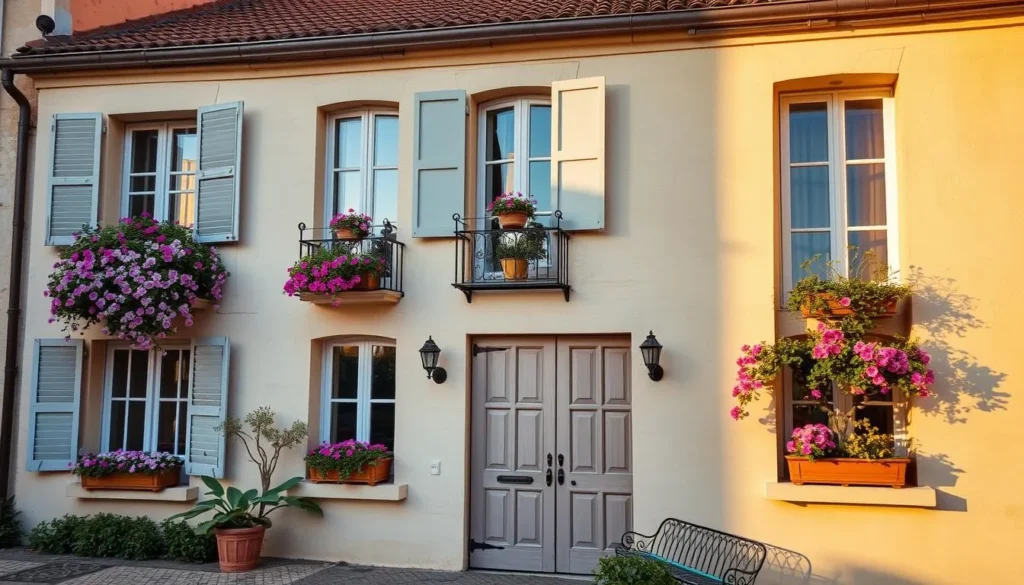
Accommodation options in Arles vary widely, from luxury hotels in converted historic buildings to budget-friendly guesthouses and vacation rentals. Prices fluctuate significantly with the seasons, with peak rates during summer festivals and lowest rates in winter.
Historic Center
Staying within the ancient walls puts you steps away from major attractions and restaurants. The area around Place du Forum offers charming boutique hotels in centuries-old buildings. While more expensive, these accommodations provide authentic atmosphere and convenience.
Best for: First-time visitors, culture enthusiasts, those without cars
La Roquette
This picturesque neighborhood south of the center features narrow streets with colorful shutters and plant-filled balconies. It offers a more local experience while still being within walking distance of main sights. You’ll find charming B&Bs and apartment rentals here.
Best for: Photography lovers, longer stays, those seeking local atmosphere
Outside the Center
Accommodations on the outskirts or in nearby villages offer better value and often include amenities like swimming pools and parking. These options work best if you have a car, as they’re typically 10-20 minutes from the historic center.
Best for: Families, budget travelers, those exploring the wider region
Find Your Perfect Stay in Arles
Browse a wide selection of hotels, B&Bs, and vacation rentals to match your budget and preferences.
Booking well in advance is essential if you plan to visit during the summer photography festival (July-September) or Easter week when the Feria brings crowds to the city. For the best combination of pleasant weather and accommodation availability, consider the shoulder seasons of May-June or September-October.
Dining & Local Cuisine
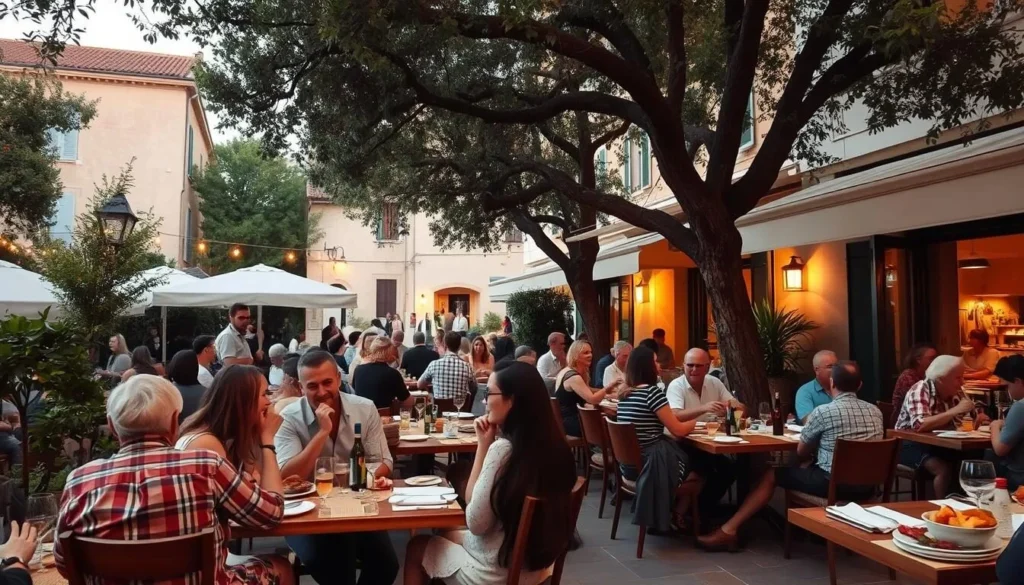
Arles’ cuisine reflects its unique position between Provence and the Camargue wetlands, with seasonal ingredients playing a starring role. The city’s restaurants range from simple cafés to fine dining establishments, with most concentrated around Place du Forum and Rue du Dr. Fanton.
Seasonal Specialties
Spring
- Asparagus – Local white and green varieties served with aioli
- Artichokes à la Barigoule – Braised with white wine and herbs
- Spring lamb – Often served with fresh herbs and early vegetables
Summer
- Ratatouille – Classic vegetable stew at its best with summer produce
- Tapenade – Olive spread served with crusty bread
- Rosé wines – Refreshing local varieties perfect for hot days
Autumn
- Camargue red rice – Often with seafood or in salads
- Gardiane de Taureau – Bull meat stew with olives and red wine
- Fig desserts – Fresh or in tarts when in season
Winter
- Daube Provençale – Slow-cooked beef stew with orange zest
- Soupe au Pistou – Vegetable soup with basil sauce
- Fougasse – Local bread flavored with olive oil and herbs
For the best dining experience, seek out restaurants displaying the “Cuisine de Terroir” sign, indicating they use local, seasonal ingredients. Meal times in Arles follow the French pattern, with lunch from 12:00-14:00 and dinner from 19:30-22:00. Reservations are recommended during high season, especially for dinner.
Dining Tip
Many restaurants offer excellent value with fixed-price “menu du jour” options at lunch. These typically include 2-3 courses for 15-25€ and feature seasonal specialties.
Attractions, Sightseeing & Activities

Arles offers a fascinating blend of Roman history, Van Gogh’s artistic legacy, and Provençal culture. The city’s compact size makes it possible to see major attractions in a day or two, though a longer stay allows for a deeper appreciation and excursions to the surrounding region.
Roman Monuments
Arles boasts an exceptional collection of Roman structures that earned UNESCO World Heritage status. The imposing Amphitheatre (Arena) dates from the 1st century and once held 20,000 spectators for gladiatorial contests. Nearby, the Ancient Theatre hosted classical performances for 10,000 people. Other Roman sites include the Cryptoporticus (underground galleries) and the Alyscamps necropolis.
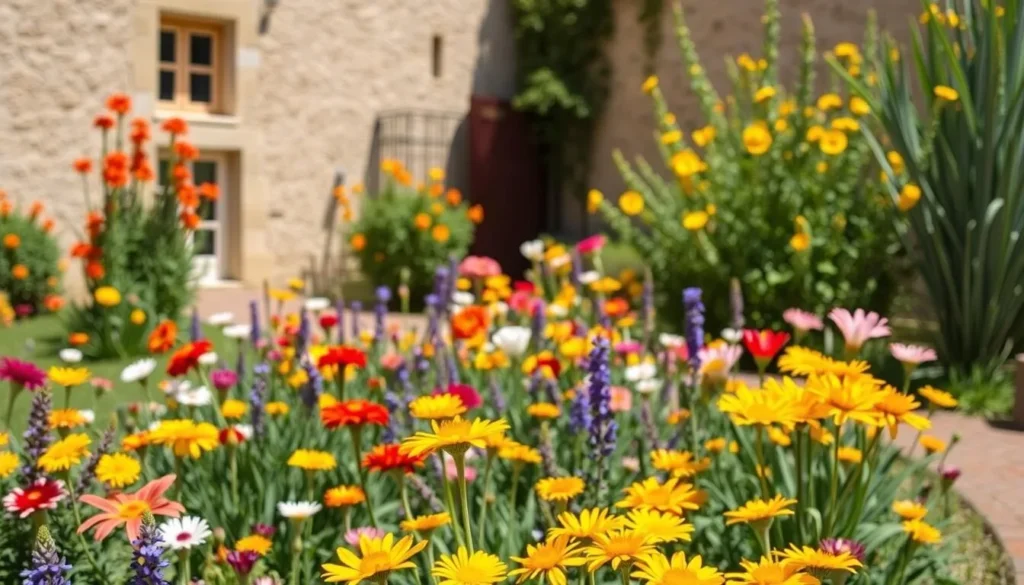
Van Gogh’s Arles
Vincent van Gogh spent a productive year in Arles (1888-1889), creating over 300 paintings and drawings. While his famous Yellow House was destroyed in WWII, you can visit sites he painted, including the garden at the former hospital (now Espace Van Gogh) and the Langlois Bridge. The Foundation Vincent van Gogh Arles hosts exhibitions connecting his legacy with contemporary art.
Experience the Best of Arles
Discover guided tours of Roman monuments, Van Gogh walking routes, and excursions to the nearby Camargue wetlands.
Museums & Cultural Spaces
The Musée Réattu houses an impressive collection of paintings, drawings, and photography in a former Grand Priory of the Knights of Malta. The Musée Départemental Arles Antique displays an exceptional collection of Roman artifacts, including a remarkably preserved 31-meter-long Roman barge discovered in the Rhône River.
Seasonal Activities
Spring/Summer
- Attend the Easter Feria with its Spanish-influenced celebrations
- Explore the international photography festival Les Rencontres d’Arles (July-September)
- Take a guided tour of the Camargue to see flamingos and wild horses
Autumn/Winter
- Visit the Rice Harvest Festival in September
- Attend the Salon International des Santonniers (figurine makers) in winter
- Explore museums and galleries without crowds
Museums, Cultural Spots & Festivals

Year-Round Cultural Calendar
| Month | Festival/Event | Description | Weather Considerations |
| April | Feria de Pâques (Easter) | Bullfighting events, flamenco, and street parties | Can be rainy; bring layers |
| May | European Night of Museums | Free evening access to museums with special events | Pleasant evening temperatures |
| July-September | Les Rencontres d’Arles | World-renowned photography festival | Hot; plan indoor activities midday |
| September | Rice Harvest Festival | Celebration of Camargue rice culture | Warm days, cooler evenings |
| September | Feria du Riz (Rice) | Second major bullfighting festival of the year | Generally pleasant |
| December | Drôles de Noëls | Street performances and holiday celebrations | Cold; dress warmly |
Cultural Venues
Beyond its museums, Arles offers several unique cultural spaces. The LUMA Arles arts center, housed in a striking tower designed by Frank Gehry, hosts contemporary art exhibitions and cultural events. The Théâtre Antique stages performances during summer months, allowing visitors to experience the ancient venue as Romans once did.
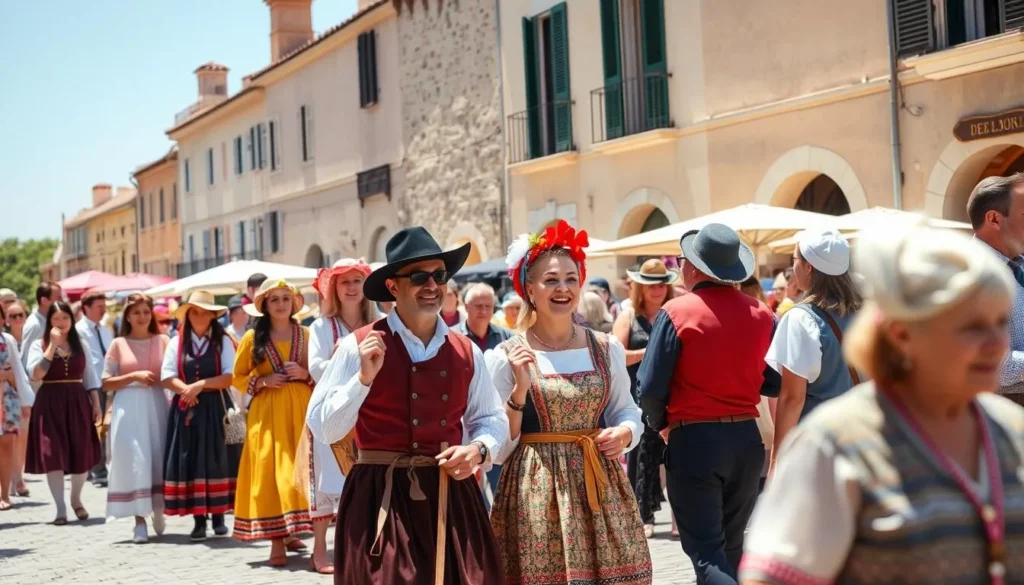
The city’s cultural calendar is busiest from April through October, with multiple events often running simultaneously during summer. If your primary interest is photography, plan your visit during Les Rencontres d’Arles, but be prepared for higher accommodation prices and larger crowds.
Sports, Nature & Outdoor Experiences

While Arles itself is primarily known for its cultural attractions, the surrounding natural areas offer excellent outdoor activities throughout the year. The proximity to the Camargue wetlands, Alpilles mountains, and Mediterranean coast provides diverse landscapes for nature lovers.
Seasonal Outdoor Activities
Spring
- Bird watching in the Camargue (peak flamingo season)
- Cycling along the Van Gogh route
- Hiking in the Alpilles when wildflowers bloom
Summer
- Early morning kayaking on the Rhône River
- Beach trips to Saintes-Maries-de-la-Mer (30 minutes away)
- Evening walks along the riverfront
Autumn
- Horseback riding in the Camargue
- Cycling through vineyards during harvest
- Mushroom foraging with local guides
Winter
- Winter bird migrations in the Camargue
- Clear-day hiking in the Alpilles
- Day trips to nearby Avignon or Nîmes
The Mistral wind significantly impacts outdoor activities, especially in winter and spring. On windy days, choose sheltered locations or indoor alternatives. The Camargue is particularly exposed, making wind-free days ideal for visiting this unique ecosystem.
Outdoor Safety Tip
Summer heat in Arles can be intense, with temperatures regularly exceeding 30°C (86°F) between June and August. Plan outdoor activities for early morning or evening, wear sun protection, and carry plenty of water.
Safety, Etiquette & Local Customs
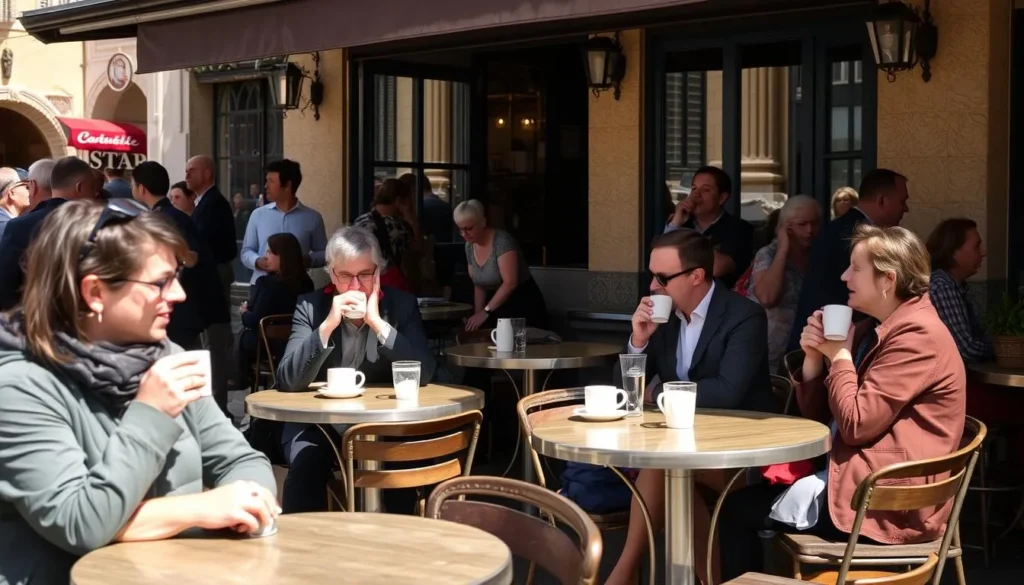
Arles is generally a safe destination for travelers, with typical precautions advised. Petty theft can occur in crowded tourist areas, particularly during summer festivals, so remain vigilant with personal belongings. The historic center is well-lit and safe for evening strolls.
Local Etiquette
- Greet shop owners with “Bonjour” when entering and “Au revoir” when leaving
- Keep voices moderate in restaurants and public spaces
- Tipping is not required but rounding up the bill or leaving 5-10% for good service is appreciated
- Ask permission before photographing locals, especially during traditional events
- Dress modestly when visiting churches and religious sites
Cultural Considerations
Bullfighting is part of Arles’ cultural heritage, with events held in the Roman Amphitheatre. While controversial, it remains important to many locals. Visitors can choose whether to attend or avoid these events based on personal preferences.
The Camargue region has a distinct cultural identity, with traditions centered around bulls, horses, and rice cultivation. The area is also home to Romani communities who celebrate their patron saint, Sara-la-Kali, during an annual pilgrimage to Saintes-Maries-de-la-Mer in May.
Health Considerations
Summers in Arles can be extremely hot, with temperatures sometimes exceeding 35°C (95°F). Stay hydrated, use sun protection, and consider scheduling indoor activities during the hottest midday hours. The Camargue wetlands can have mosquitoes, particularly in summer, so bring repellent if visiting.
Practical Travel Tips

What should I pack for different seasons in Arles?
Spring/Autumn: Layers are essential. Pack a light jacket, sweaters, comfortable walking shoes, and a compact umbrella. A scarf is useful for protection against unexpected Mistral winds.
Summer: Light, breathable clothing, sun hat, sunglasses, and high-SPF sunscreen. A light scarf or shawl for cooler evenings and air-conditioned spaces.
Winter: Warm layers including a windproof jacket, scarf, gloves, and hat. The Mistral wind can make temperatures feel much colder than indicated.
How many days should I spend in Arles?
Two to three days is ideal for exploring Arles itself, allowing time to visit the major Roman monuments, Van Gogh sites, and museums without rushing. Add extra days if you plan to attend festivals or make excursions to the Camargue, Alpilles, or nearby cities like Avignon and Nîmes.
Is Arles suitable for family travel?
Yes, Arles offers attractions for all ages. Children typically enjoy the Roman Amphitheatre, boat trips on the Rhône, and excursions to see Camargue wildlife. The compact city center is stroller-friendly, though cobblestone streets can be challenging. Summer heat can be difficult for young children, making spring and autumn better choices for family visits.
What are the best photo opportunities in Arles?
The golden hour (early morning or late afternoon) provides the best light for photography in Arles. Top spots include the Roman Amphitheatre, the cloister of Saint-Trophime, the colorful houses in La Roquette neighborhood, and the Rhône riverfront. Spring and autumn offer the most photogenic conditions, with summer providing vibrant festival scenes and winter offering atmospheric misty mornings.
Money-Saving Tips
- Purchase the Arles Monument Pass for access to multiple Roman sites
- Visit during shoulder seasons (May-June or September-October) for lower accommodation rates
- Take advantage of fixed-price lunch menus (“menu du jour”) for better value dining
- Use the free city map from the tourist office to self-guide rather than paying for tours
- Consider staying slightly outside the historic center for better accommodation rates
Experience the Timeless Beauty of Arles
Whether you’re drawn by the golden light that captivated Van Gogh, the remarkably preserved Roman monuments, or the unique blend of Provençal and Camargue cultures, Arles rewards visitors in every season. By timing your visit to align with your weather preferences and interests, you’ll discover why this ancient city continues to inspire artists, photographers, and travelers from around the world. Pack your camera, bring layers for the Mistral, and prepare to be enchanted by Arles’ timeless beauty and vibrant spirit.
The above is subject to change.
Check back often to TRAVEL.COM for the latest travel tips and deals.
